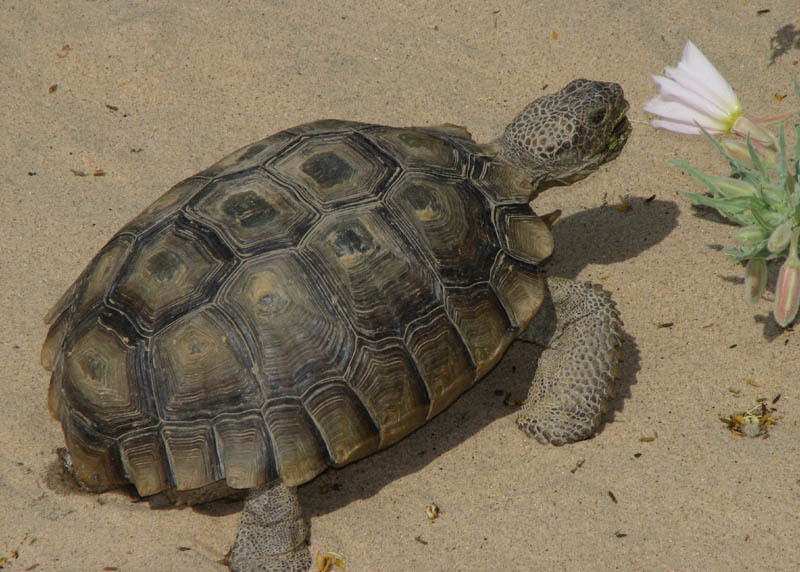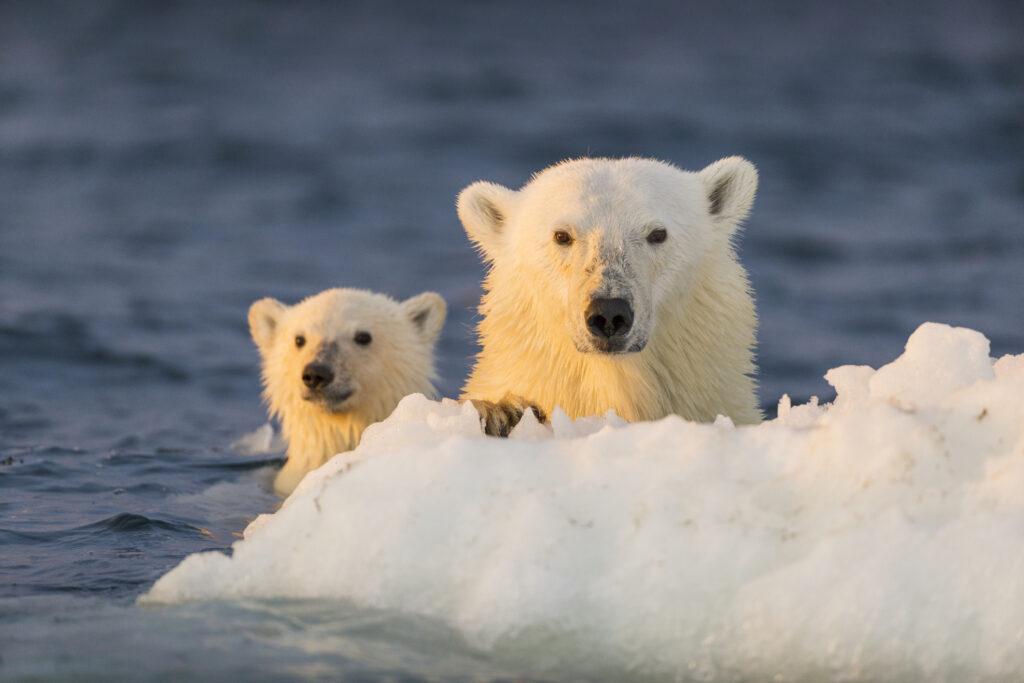Construction of BrightSource Energy’s Ivanpah solar power project in the Mojave Desert is destroying the habitat of threatened desert tortoises. Conservationists have documented that in addition to destroying desert tortoise habitat, the project, approximately 50 miles south of Las Vegas in southeastern California, has directly caused many desert tortoise deaths.
High Economic, Environmental Costs
Capturing a “free and clean” source of energy is not cheap, nor is it free from environmental impact. The Ivanpah project will cost more than $2 billion and consume 3,500 acres of public land in California’s Mojave Desert. To make way for the “green energy,” BrightSource mowed down desert plants, displaced dozens of animal species, and relocated numerous desert tortoises, moves some experts say could kill up to one-third of the threatened reptiles.
Capital costs and other market factors will make the solar energy captured at Ivanpah three times more expensive than natural gas or coal. As a result, electricity customers will see their bills increase up to 50 percent for renewable energy, according to an analysis from the consumer advocate branch of the state Public Utilities Commission.
To appease environmental concerns, BrightSource has paid $56 million to protect and relocate scores of desert tortoises. But even that has not been enough to avert catastrophe. Animals were crushed under vehicle tires, army ants attacked hatchlings in a makeshift nursery, and other calamities have befallen tortoises made vulnerable by the project.
Almost No Research Done
Jeff Lovich, a research ecologist with the Southwest Biological Science Center, has studied the impact of renewable energy projects on desert tortoises for the U.S. Geological Survey. He says the potential environmental effects of building and operating a facility like Ivanpah are enormous, yet there is almost no research on the subject.
While conducting his own research, Lovich studied the effects of heat generation, light reflection, vibration, dust, noise, and other factors on the environment and the desert tortoise.
“What I determined is science is playing catch-up to energy concerns,” said Lovich. “This is all a grand experiment, and we need more research—both on the short-term effects and the long-term effects that projects like these are going to have on the wildlife and the ecosystem.”
“For the desert tortoise, it really is death by a thousand cuts,” Lovich explained.
Green Power Myths
Daniel Simmons, director of State Affairs for the Institute for Energy Research, says Ivanpah illustrates the often overlooked environmental costs of solar power.
“Located in the ecologically fragile Mojave Desert, the Ivanpah facility covers a mammoth six square miles but only has 400 megawatts of capacity when the sun is shining at its brightest. Covering six square miles with solar panels entails a high environmental cost as cacti and other plans are cut down so that they do not interfere with the panels,” Simmons explained.
“The Ivanpah plant is a good reminder that all sources of energy have tradeoffs, and with solar power it means disturbing a lot of land in some delicate ecosystems,” said Simmons.
H. Sterling Burnett, a senior fellow at the National Center for Policy Analysis, agrees the damage is much greater than solar power advocates have acknowledged, and the federal government has looked the other way. “These supposedly green, solar power industrial sites are wreaking havoc on desert species and ecosystems,” he said.
He explained, “In just a couple of years the federal government has given a few solar power companies access to 21 million acres of the public’s lands—more than it has allowed for oil and gas exploration in the past decade. And all for power that is less reliable, much more expensive, and has a significantly greater environmental impact than conventional alternatives.
“It’s the California wind farms all over again. For decades, they’ve been allowed to kill protected raptors—including eagles—with no real punishment. Now solar farms threaten to wipe out the desert tortoise, a species on the endangered species list,” Burnett added.
“If this were an oil company, construction would have been halted and lawsuits filed. This boondoggle is bad for the economy, bad for the public, and terrible for the environment,” Burnett said.
Kenneth Artz ([email protected]) writes from Dallas, Texas.





